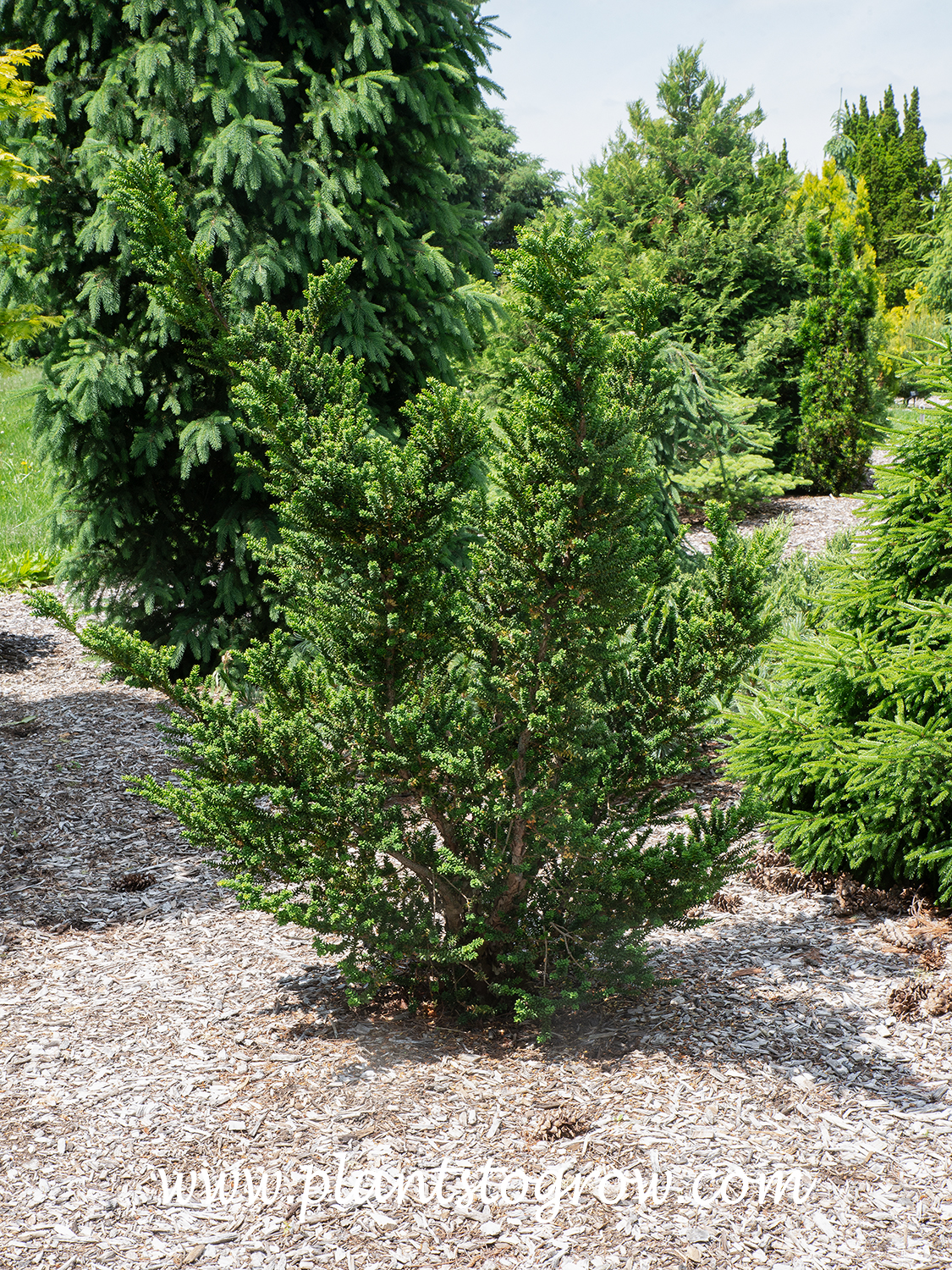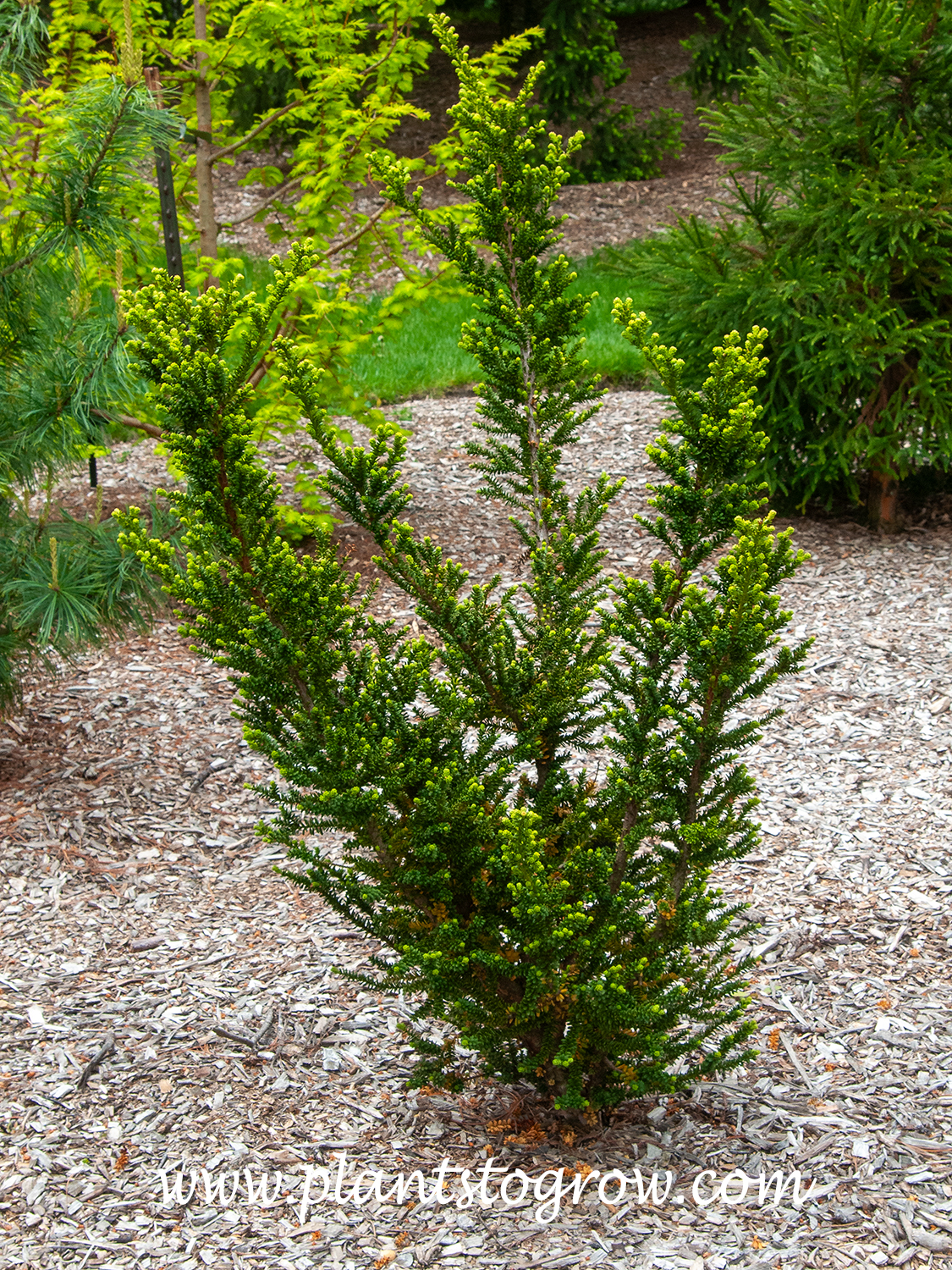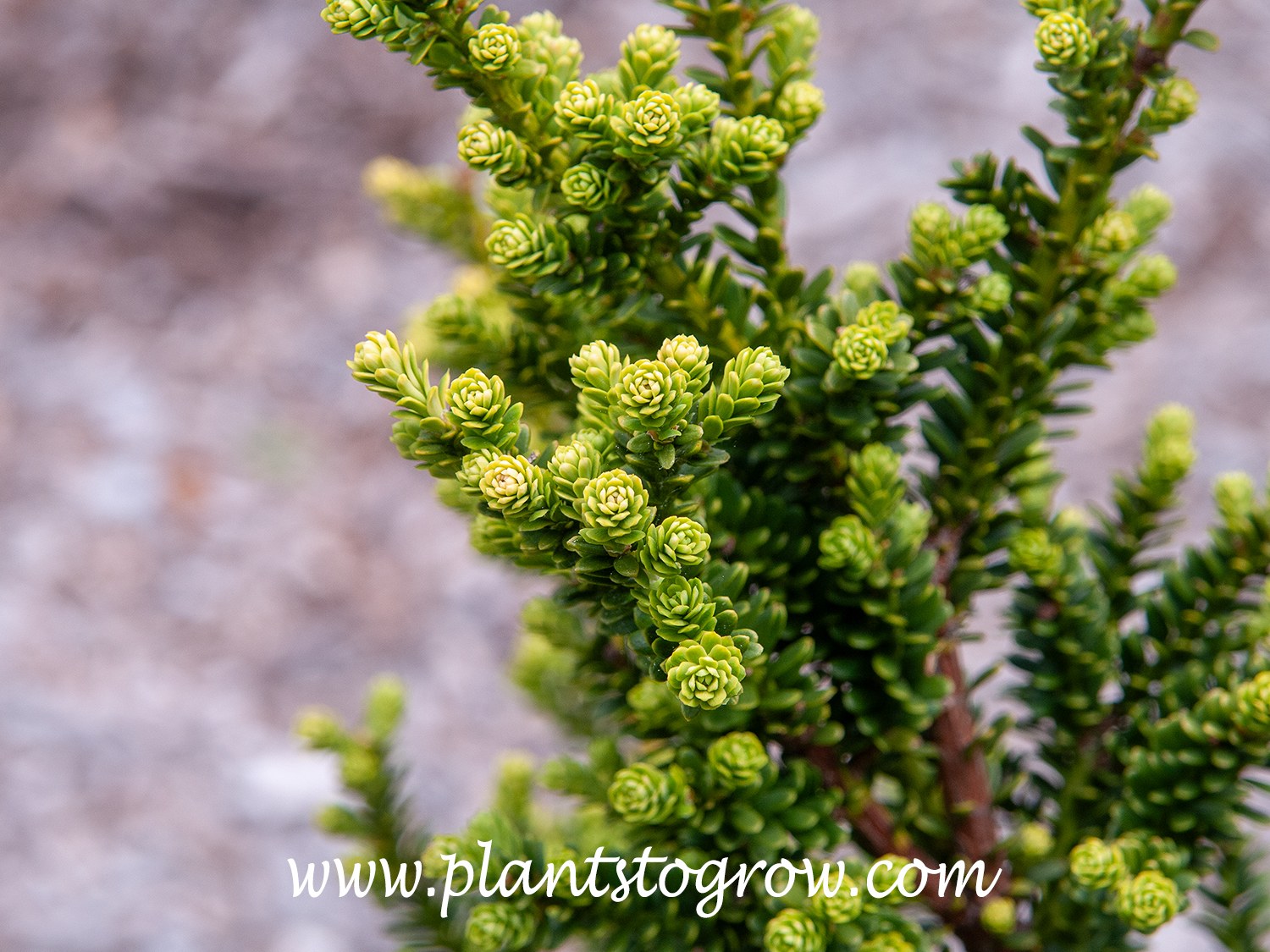| Description | Amersfoort English Yew (Taxus baccata) is a slow-growing irregular-shaped conifer. The short, rounded, evergreen needles are a deep green. |
|---|---|
| Pronunciation | (TAKS-us)(ba-KA-tah) |
| Plant Type | Shrubs Coniferous |
| Hardiness Zone | (5)6-7 |
| Sunlight | full, mostly sunny, tolerates some shade |
| Moisture | average |
| Soil & Site | average |
| Leaves | The leaves are flat, round, and evergreen. Rounded Boxwood-like leaves are unusual for yews. |
| Stems | outward spreading |
| Dimensions | 5-8 by 2-3 in tens years, dwarf, slow growing, irregular form |
| Maintenance | It is very prunable and easily kept to size. Prune after the new growth hardens. Will recover slowly from hard pruning into old wood. |
| Propagation | cuttings |
| Native Site | Species native to Europe, the Atlas Mountains, Asia Minor, and the Caucuses. |
| Cultivar Origin | "This cultivar originated in France in the 1930s and was brought to the nursery of D.B.B. van den Hoorn in Boskoop, The Netherlands, who later planted it on the grounds of Amersfoort Psychiatric Hospital, The Netherlands, hence the cultivar name. The plant was so unusual and distinctive that it defied identification. Initial attempts were Podocarpus and later Taxus baccata. A recently reverted specimen in the Netherlands showed that this cultivar belongs to T. cuspidata." (American Conifer Society) |
| Misc Facts | Genus name is an old Latin name for yews. The specific epithet means fruit-bearing in reference to the showy red arils. |
| Notes & Reference | #01-Manual of Woody Landscape Plants (Michael Dirr), 144-Missouri Botanical Gardens web site (www.missouribotanicalgarden.org), #202-American Conifer Society (www.conifersociety.org) |

Cart



